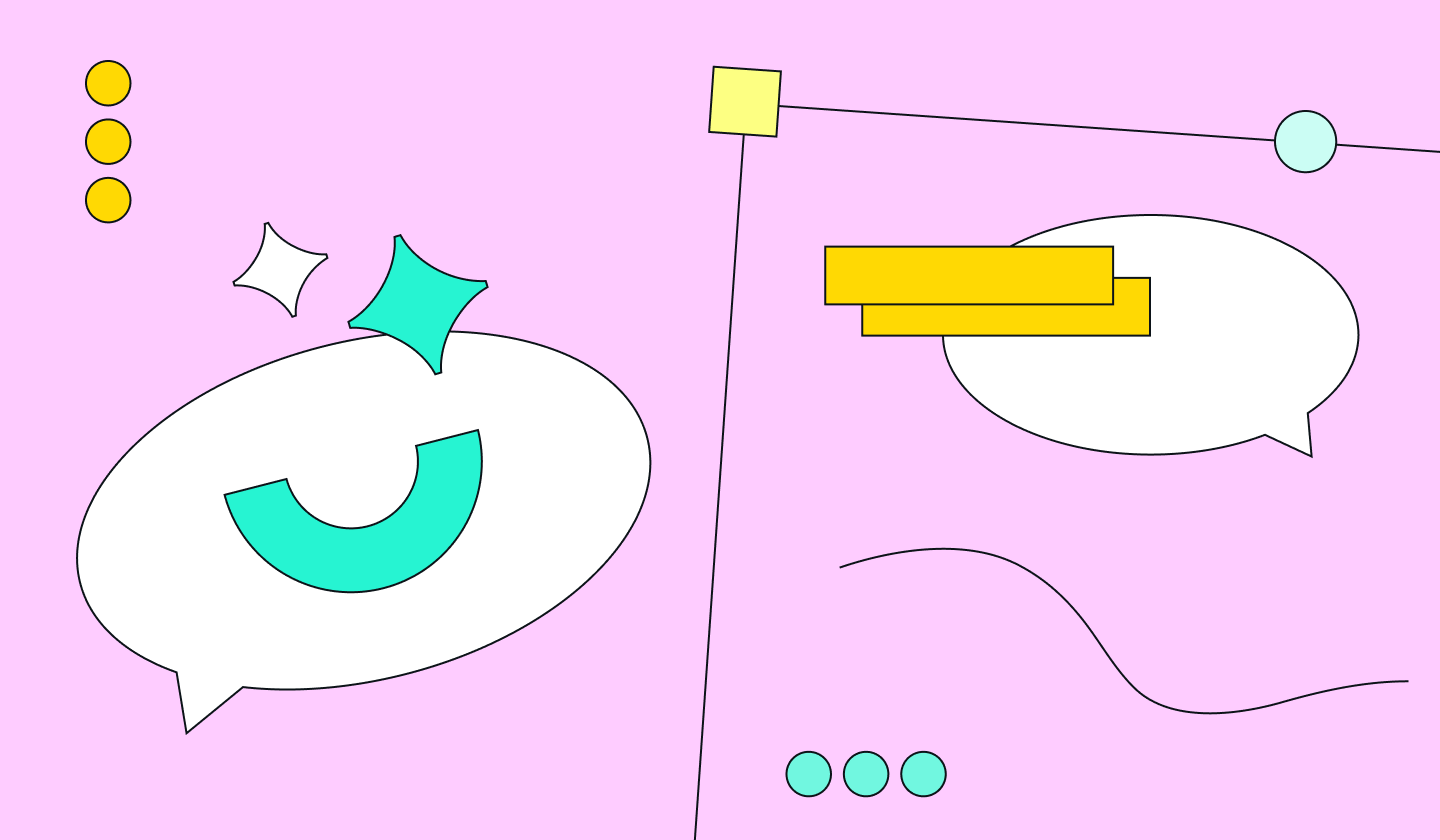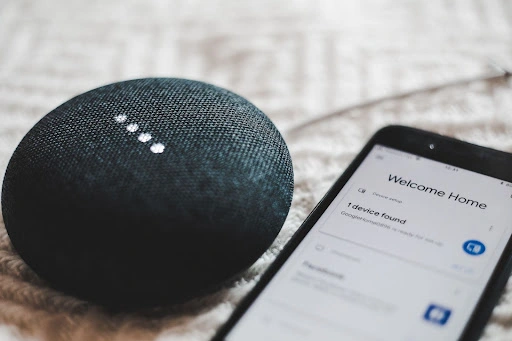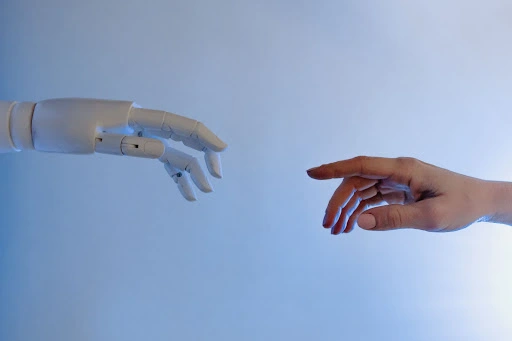Contents
Voice technology is everywhere these days. From Google Maps navigation to Siri and Alexa, voice assistants are becoming increasingly popular as they allow us to complete tasks hands-free. The rise of AI voice technology has undeniably changed how we interact with digital products. From virtual assistants to smart home devices, AI voice has become an essential part of our daily lives. But what does this mean for UX design?
 Voice service technology is revolutionizing the way we interact with our devices. It refers to the advanced technology where people can interact via voice commands with their smartphones, smart speakers, or virtual assistants.
Voice service technology is revolutionizing the way we interact with our devices. It refers to the advanced technology where people can interact via voice commands with their smartphones, smart speakers, or virtual assistants.
One of its biggest advantages is the convenience it offers. No more typing or searching for information on a screen. So, with just a voice command, we can get the information we need. We can set a destination in Google Maps for voice navigation or ask Alexa or Google Assistant for information.
A few years ago, we wrote an article about how the shift to voice-enabled interfaces could change the work of product designers. Three years have passed since then, and voice technology evolved a lot. It is becoming more accurate and responsive, making it an even more useful tool in our daily lives. So, let’s take another look at what designers should know about voice technology today.
The increasing role of sound design in UX
Sound design plays a critical role in creating a positive user experience for voice service technology. The right sounds can help users navigate the technology more easily, and audio clues for feedback are crucial for voice interactions. It is especially important to add a sense of personality to these devices to create trust and ensure that users feel the interaction is natural. Therefore, finding a natural-sounding voice is important. Additionally, for voice assistants, it is also a key element to add brand identity to the device.
As voice service technology continues to grow in popularity, it’s important for designers to prioritize sound design as a key element of the user experience. By incorporating thoughtfully crafted sounds into the user experience, designers can create a more engaging and memorable interaction with their digital products. The use of sound adds another dimension to the overall user experience, fostering emotional connections and leaving a lasting impression on users.
UI sound design and UX sound design
By understanding the difference between UI sound design and UX sound design, designers can create audio elements that enhance the overall user experience, making it more usable, emotionally engaging, and effective.
UI sound design
UI sound design refers to the specific sounds that are associated with user interface elements, such as button clicks or menu selections. From a functional perspective, sound design can be divided into two main categories: notification sounds and interaction sounds.
- Notification sounds are ubiquitous in both digital and physical products. They aim to capture the user’s attention to an important element while providing information. Whether it’s an email notification on your phone or a “ping” when a message arrives, notification sounds serve to keep users informed and engaged.
- Interaction sounds are used to provide feedback to users when they perform an action within our product. For example, the sound that plays when we move a file to the trash on our desktop or the sound Siri makes to indicate that it is ready to take instructions.
UX sound design
UX sound design refers to the broader use of sound and audio to enhance the overall user experience, extending beyond the specific interactions within the interface. While UI sound design is a more focused discipline, UX sound design takes a more holistic approach aiming to create audio elements that enhance the emotional connection and brand identity of a product. This can include ambient soundscapes or voiceovers to evoke certain emotions or for brand recognition. An example of UX sound design is a calming ambient background sound for a meditation app or a signature audio logo that plays during the product’s loading screen.

Skeuomorphism: matching the system with the real world
A design approach in which digital interfaces incorporate design elements that mimic real-world objects is called Skeuomorphism. This approach is not limited to visual elements but also applies to audio elements of digital products. Take, for instance, the experience of deleting a file on a MacBook. Not only is there the icon of a trash bin, but you also hear the sound of a crumpled paper thrown away.
Skeuomorphism has long been a subject of debate in the UX community. While some argue that it improves the user experience by providing familiarity and intuitiveness, others find it confusing and distracting. Skeuomorphism took a backseat with the rise of flat design, but it seems to make a comeback in UX, especially with the advancement of voice technology.
In products where you can have conversations, such as Alexa, skeuomorphism is used to make the other participant’s voice sound as human as possible, engaging us in a more immersive experience. It goes beyond mere functionality. For example, Alexa talks to us like a person and even throws in the occasional joke. In products where we interact with only our ears, skeuomorphism continues to evolve and shape our digital experiences.
It should be noted that skeuomorphism should be used in moderation in both visual and sound designs.
What is AI voice?
Now that we have talked about sound categorization let’s move on to AI Voice technology. Voice Artificial Intelligence is a term that does not have a clear definition yet, but in general, it refers to synthetic voices that mimic human speech using AI and deep learning technology. These voices are used in different ways, such as text-to-speech or speech-to-speech. AI voice technology refers to the ability of a device or software to recognize and respond to human speech.
Text-to-speech
With advances in machine learning and natural language processing, it’s now possible to create highly realistic and natural-sounding voices that can read any text. These voices can be used for a variety of applications, from audiobooks and podcasts to virtual assistants and accessibility tools. Here are some examples of AI voice technology for text-to-speech:
- Amazon Polly
- Google Text-to-Speech
- IBM Watson Text to Speech
- Microsoft Azure Text to Speech
- NaturalReader
Speech-to-text
By using AI voice technology, users can interact with digital products using only their voices without a keyboard or touchscreen. A very good example of this Descript tool is an AI-powered editor that transcribes audio and video recordings for text editing. It removes background noise, improves recording quality, detects filler words, and adds AI voices. With Descript’s feature Overdub, you can correct misspoken words using a synthesized version of your own voice. The most commonly used tools for speech-to-text are:
- Amazon Transcribe
- Google Cloud Speech-to-Text
- Microsoft Azure Speech Services.
AI voice services in various industries
AI voice technology has been implemented in various products and services across different industries. Virtual assistants such as Alexa and Siri are the most popular examples. These AI-powered voice assistants can perform various tasks such as setting reminders, making phone calls, or controlling smart home devices. Let’s take a look at how AI voice is used in different industries:
- Healthcare: to improve patient care. For example, AI-powered voice assistants can help patients schedule appointments, manage their medications, and even monitor their symptoms.
- Retail: voice assistants can help customers find products, place orders, and receive personalized recommendations.
- Military: to improve communication and efficiency. AI-powered voice assistants can provide real-time translations, improve situational awareness, and even control unmanned vehicles.
- Transportation and logistics: for example, AI-powered voice assistants can be used to provide real-time traffic updates, optimize routes, and even provide delivery status updates to customers.
- Hospitality: voice assistants can provide guests with information about the hotel and local attractions or control room features such as lighting and temperature.
Benefits of AI voice technology in digital products
There are several benefits to incorporating AI voice technology into digital products. Here are a few:
- Improved accessibility: For users with disabilities or mobility issues, using voice commands can make digital products more accessible.
- Enhanced user experience: By using voice commands, users can access information and complete tasks more quickly and easily, resulting in a more enjoyable user experience.
- Increased efficiency: AI voice technology can streamline workflows and automate repetitive tasks, freeing up time for users to focus on more important tasks.
- Personalization: By using voice recognition, digital products can be customized to individual users, providing a more personalized experience.
When designing products that involve AI technology
It is crucial to consider the various limitations of the technology. While AI can enhance the user experience, it can also be a hindrance if not properly utilized. This includes automated decision-making without human oversight, biased algorithms that perpetuate discrimination, and invasion of privacy through data collection and analysis without consent.
It is important to remember that AI algorithms are only as unbiased as their creators and the data they are trained on. Therefore, ensuring that AI is used ethically and responsibly is crucial, with human oversight and accountability mechanisms in place to prevent unintended consequences. Additionally, it is important to weigh in on the ethical implications of using AI. With the increased dependence on AI in today’s society, there is a risk of discrimination against certain groups of people. For example, facial recognition software sometimes misidentifies people of color, or AI-powered hiring tools disadvantage women and minorities. It is the responsibility of the designers to ensure that their products do not contribute to this problem.
To avoid any unintended negative consequences, designers should involve users in the design process. If they can collect data from minority communities, people with disabilities, and individuals with diverse backgrounds and experiences in their user research and testing, that will help ensure that the technology is accessible and beneficial to all users and does not harm or exclude anyone. By doing so, designers can gather feedback and ideas from the users, which can be used to improve the product over time. This iterative approach ensures that the product is designed around the needs of the user and can be continuously improved.
Challenges of AI voice technology in digital products
While there are many benefits to incorporating AI voice technology into digital products, there are also some challenges to consider. Here are a few:
- Privacy concerns: Voice data is highly personal and sensitive. 👉 It is important to address privacy concerns related to the collection and use of this data.
- Accents and dialects: NLP algorithms may struggle to understand accents and dialects. 👉 It is important to ensure that the technology works for all users.
- False positives: Sometimes, AI voice technology may misinterpret a user’s command. 👉 It can lead to frustration and errors.
Humans vs. AI voice
AI voice technology changes our behavior by making it easier and faster to complete tasks. We can now use voice commands to control various devices and applications, reducing the need for physical interaction with them. This can lead to a more efficient and hands-free experience. However, it is important to note that the convenience of AI voice technology can also lead to increased dependence on it, potentially affecting our ability to perform tasks without it.
Regarding data privacy rules, AI voice technology must comply with the same regulations as any other technology that collects and stores user data. This includes obtaining user consent for data collection and ensuring that data is stored securely and used only for its intended purposes. It is the responsibility of the companies that use AI voice technology to comply with these regulations and protect the privacy of their users.
Summary
AI voice technology has transformed the way we interact with digital products, and sound design plays an even more critical role in creating a positive user experience. Incorporating AI voice technology into digital products can improve accessibility, enhance the user experience, increase efficiency, and provide personalization. AI can be used to automate tasks, analyze data, and make predictions. However, it is important to consider ethical implications and potential bias when implementing AI in digital products and to ensure that users understand how AI is being used and have control over their data.
Searching for the right UX agency?
UX studio works with rising startups and established tech giants worldwide.
Should you want to improve the design and performance of your digital product, book a consultation with us. We will walk you through our design processes and suggest the next steps! Our experts would be happy to assist with the UX strategy, product and user research, UX/UI design, etc.






